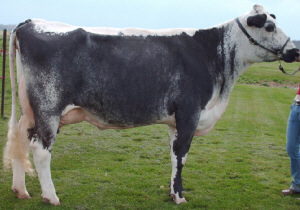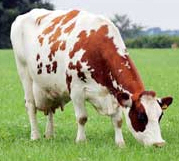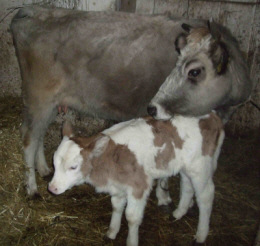



Lineback
History
The Lineback is a rare breed originating from America, in the 18th and 19th Century the Lineback was a dual-purpose animal, fulfilling the owners needs for both milk and meat. During these times there was an increase in importation of European and British breeds such as the Witrick, Gloucester and Welsh cattle. It can be assumed that cattle that were exported to the USA could have played a part in the history of this breed. Photo courtesy of the American Lineback Dairy Cattle Association, americanlinebacks.tripod.com |
As cattle breeds started to specialise in either beef or dairy production, the Lineback has over time been selected for improved dairy production although it remains very versatile.
In 1985 a group of Lineback enthusiasts gathered together and formed the American Lineback Cattle Association. This group had the foresight and desire to maintain and improve this beautiful breed. Today there are several thousand Lineback dairy cows in the United States.
Characteristics
The Lineback has a very beautiful coat, it is generally black on the sides with a white line down the back and along the belly as the name suggests. They can also come in roan or white with red or black speckles on their sides.Two named patterns are the Witrick pattern where the cattle have speckled or dark sides, a black nose, eyes and ears. They fall into 3 major types of colour patterns; the White Classic Witrick, the Dark Sided Witrick and the Dark Speckle Witrick.
There is also the Gloucester linebacks which have a solid black head, sides, legs, white belly, white garters around the tops of the legs and the distinctive white stripe across the back, from head to tail.
Statistics
Comparative
Distribution
The Lineback is being bred and conserved in the USA.References (the above information was cited from the following sites)
americanlinebacks.tripod.com


